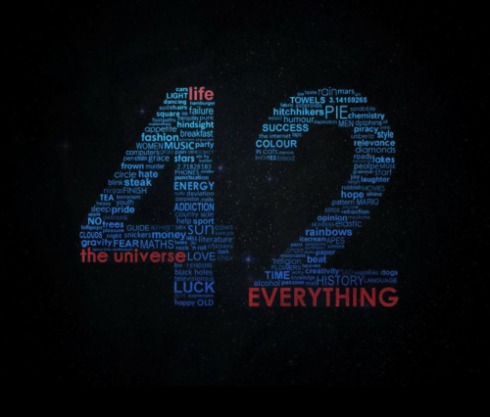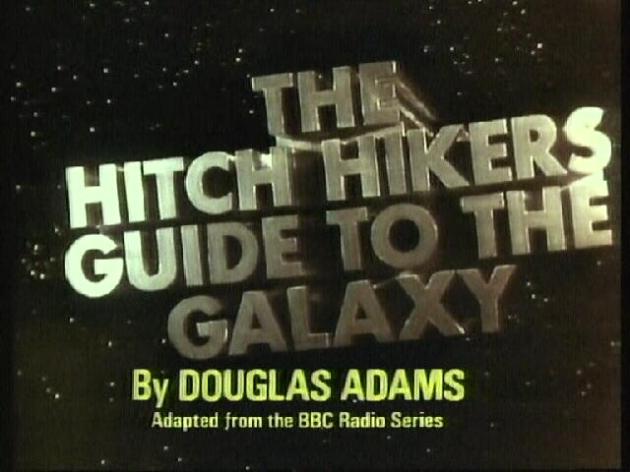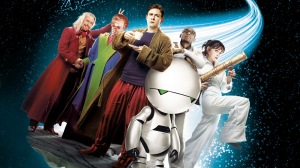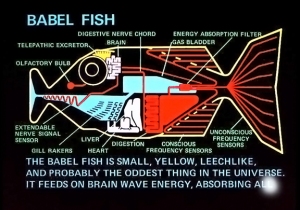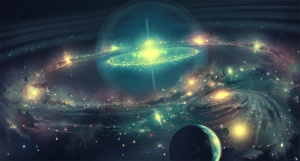In the search for answers, one must look in the most unexpected places. With life only ever being recorded on one world, much speculation has gone into possible life in other areas of the galaxy. Questions like “Are we alone?” or “Does life exist elsewhere?” have pushed humanity to explore the other regions of the ever-expanding universe in hopes of finding some shred of proof for the possibility of other life forms. The first place astronomers began to look was in the current solar system, but then they set their eyes on another set of targets: exoplanets.
An exoplanet planet, otherwise known as an extrasolar planet, is any planet that maintains an orbits around a star that is not the Sun. Current recorded exoplanets come in all shapes and sizes, that range from a size that is bigger than Jupiter to smaller than the Earth[1]. In order to find these planets and systems that exist thousands of light-years away, scientists must use a variety of methods in order to detect them. These processes can be split into two different categories: direct and indirect detection. Direct detection is simply taking a direct image of the planet itself; however, this is usually not easy because planets are very faint light sources. Most of the detection comes from indirect methods: astrometry, gravitational microlensing, pulsar timing, transit method and Doppler wobble are all methods for detecting exoplanets in a variety of different ways [2]. There are a variety of reasons of why scientists are searching for exoplanets, but perhaps one of the most compelling reasons is the idea of finding life and answering once and for all the age old question: is life a rare event, or common occurrence?
One of the most interesting discoveries of recent times in the search for exoplanets can be found within the system of Kepler-62. Existing 1,200 light-years away from Earth in the Lyra constellation, this solar system of five planets all orbit a 7 billion year old K2 dwarf star. On April 18th, 2013, Kepler-62 was found in the field of vision of the Kepler Spacecraft, a satellite from NASA’s Kepler Mission which is used to detect planets that are transiting stars [3]. The research team of William J. Borucki et al. used the transit discovery method, which is a photometric method that detects planets as they pass in front of a star, which creates a drop in the brightness of the star. The specific K2 star of the Kepler-62 system has a luminosity of about 0.21 solar luminosities, a radius around 0.64 solar radii, a mass near 0.69 solar masses, a temperature approximately 4925K (the Sun’s temperature is 5778K, making it 853K cooler), and based on typical K star lifetimes, it should end its current lifecycle and change to a red giant in 13 billion years [3]. Also, the K2 Star is only 2/3rds the size of the sun and is only 1/5th as bright [4].
Within this system exists one of the most potentially habitable exoplanets to date: Kepler-62e. This little world contains certain characteristics that make it a prime candidate for life, and could possibly answer many questions in the future search for exoplanets. Based on the habitable zones, planetary equilibrium temperature, parameters of the planet, possibility of an atmosphere, and the evolution of the star, the possibility of life does not seem far-fetched.
The Areas of Habitability
Within every planetary system exists a habitable zone, the area where water can exist as a liquid, found to be between 273K and 373K [5]. The habitable zone of a system can be calculated through a series of equations, which will be used to find the inner and outer habitable zones of Kepler-62 [6]. In order to find the inner habitable zone, you use the following equation: = 0.95AU , where stand for the inner habitable zone boundary, the 0.95AU represents the distance in astronomical units from the star and is based on Earth’s solar system’s inner habitable zone, and the stands for the luminosity of the star in terms of solar luminosities. Because it is known that Kepler-62 is only 1/5th the luminosity of the Sun, 0.2 would be used for the term . Once 0.2 is plugged into the equation, the end result is equal to 0.42AU, meaning that the inner habitable zone exists at a distance of 0.42 astronomical units.
In order to find the outer habitable zone, the same equation must be used, but the initial 0.95AU must be changed to 1.4AU to represent the outer boundary in relation to the Earth’s solar system’s habitable zone. The equation to find the outer limit of the habitable zone is as follows: = 1.4AU , where is the outer habitable zone boundary, the 1.4AU represents the distance in astronomical units from the star and is based on Earth’s solar system’s outer habitable zone, and the stands for the luminosity of the star in terms of solar luminosities. Like in the first equation, 0.2 would be used for the term . Once 0.2 is plugged into the equation, the end result is equal to 0.63AU, meaning that the outer habitable zone ends at a distance of 0.63 astronomical units.
This data shows that habitable zone of Kepler-62 would have to lie between 0.42AU and 0.63AU. Both of these are less than half of the distances of the habitable zones in Earth’s solar system. However, even though the habitable zone is smaller, Kepler-62e lies within the habitable zone at 0.427AU [3].
A Planet and its Temperature
Another important piece of information is the planetary equilibrium temperature, a theoretical temperature of the planet if it were simply a black body being heated only by the star [7]. The following equation shows the way to determine the equilibrium temperature if Kepler-62e had a similar albedo to Earth but no atmosphere [8]: = 254K , where stands for the planetary equilibrium temperature, the 254K is the given temperature based on Earth’s temperature in degrees Kelvin, is the luminosity of the star in solar luminosities, and is the distance from the star in astronomical units. In this equation, would be 0.2 solar luminosities because Kepler-62 is only 1/5th the luminosity of the Sun, and would be 0.43 astronomical units because that is how far Kepler-62e is from Kepler-62. If these points were plugged into the equation, the equilibrium temperature would be equal to 259K.
A similar equation would be used if Kepler-62e had a greenhouse effect: = 287K . The difference between this equation and the previous equation is the addition of 33 degrees Kelvin to the initial temperature to take into consideration the extra heat added under the greenhouse effect. For this equation, is the luminosity of the star in solar luminosities, and is the distance from the star in astronomical units. would again be 0.2 solar luminosities, and would again be 0.43 astronomical units. The final result of this equation would an equilibrium temperature of 292K.
If Kepler-62e did, indeed, have a similar albedo to that of Earth’s, it would also share a striking resemblance in terms of planetary equilibrium temperature, being about only 5K hotter in both instances. To clarify, Earth’s albedo was used in this equation because direct imaging is required to find a planet’s albedo, which has not yet been done for Kepler-62e.
Characteristic of a Planet
The parameters of the planet are also important to keep under consideration when exploring the habitability of a planet. One major parameter is the mass of Kepler-62e, which can be found through the following equation [9]: . represents the mass of the star in kilograms, represents the velocity of the star in meters per second, is the mass of the planet in kilograms, and is the velocity of the planet in meters per second.
In order to find the mass, one must first find all the other variables in the equation. The only variable that remains unknown is the velocity of the planet, which can be found in the following equation [9]: . is the radius of the orbit and is in units of meters, while is the period, which is how long it takes to go around the star, and is measured in seconds. would be used for because that is the radius of the orbit for Kepler-62e, and would be used for because that is the length it takes for Kepler-62e to go around its star. Once these are put into the equation, the equals 253.5 .
Now that is known, it’s possible to solve for the mass of the planet [9]: . For , or the mass of the star, kilograms would be plugged in, because that is the recorded mass of Kepler-62. For , or velocity of the star, meters per second would be put in, because that is the current velocity of Kepler-62. For , or velocity of the planet, 254 meters per second would be put because that is the velocity of Kepler-62e. This equation found the mass ofKepler-62e to be. Online sources estimate the mass to be around [3]. This minor difference is just due to rounding in the equations.
Potentiality of a Possible Atmosphere
The atmospheric conditions of Kepler-62e are not currently known [3]. However, it is big enough to possibly stay warm enough on the inside for a magnetic field to exist, and this field could protect a possible atmosphere from solar stripping. And because it is within the galactic habitable zone, it must have a high enough ratio of elements to have similar composition to that of terrestrial planets within our own solar system [10]. Also, if there are water oceans on the surface of the planet like scientists hypothesize, then some sort of atmosphere must be present for the water to remain in its liquid state. For liquid water to exist there must be enough pressure in the atmosphere; if there is not enough pressure, it would either become gaseous or solidify into ice [8]. Simply put, if there is liquid water there must also be an atmosphere.
A Change in a Star
Over the course of time, stars change and evolve, dramatically affecting the habitable zone of its surrounding planets as time continues to go by. It’s important to keep the star type and age into consideration when exploring and searching for possible places where life could be found. In this particular instance, Kepler-62 is a K2 dwarf star that is approximately 7 billion years old. K stars make up 15% of all stars and have lifetimes of about 20 billion years. K stars transform from orange dwarfs into red giants, then planetary nebula, and end up as a white dwarf. This means that Kepler-62 will eventually get brighter as it ages, pushing the habitability zone further outward over time. Because Kepler-62e is at the inner edge of the habitable zone, it will leave the habitable zone sooner than its fellow planet Kepler-62f. However, it will take much longer for this process to occur than it would for our Sun because of Kepler-62’s smaller size.
A Whole New World
Much speculation has gone into what the world of Kepler-62e would really look like. Current computer models are suggesting that it is covered by “uninterrupted oceans”, which could mean that much of the life of the planet would exist deep within the recesses of the only-aquatic environment [11]. Scientists also believe in the possibility of bird-like creatures that might exist, but doubt that there would be a technologically advanced species like humanity because they would not have easy access to electricity or metallurgy. However, if there is any land, it would change the possibilities completely [11]. With the idea of a world covered in water, it is theorized that Kepler-62e could either be liquid down to the core or have a solidified surface beneath a shallow ocean. If the latter model is true, this would be more conducive to life as we know it [12]. According to computer models, Kepler-62e would also probably have a very cloudy sky, and would be warm and humid all the way to the polar regions of the planet [13].
So, are you tired of living on land? Exhausted of living above the ocean? Wishing you could spend your days deep within large pools of liquid? Well, wish no more! Introducing your new soon-to-be-home planet of Kepler-62e! Believed to be completely submerged under oceans, you’ll never have to worry about seeing dry land again. With nice cloudy skies, and humid and warm weather around the clock, you’ll be glad you left the dry, cold Earth. Come and see all the hundreds of new species of aliens being discovered every day! Spend you days relaxing in your new under-water home, submerged beneath the ocean in a structure housing you and your loved ones. And food will never be a problem; scientists are working around the clock to uncover which aliens can be eaten and used as food sources, and they are finding more and more with each passing day. So what are you waiting for? Pack up your things and come move to Kepler-62e, the most Earth-like exoplanet around!
Final Thoughts
The discovery of the Kepler-62 star system and its subsequent planets has re-invigorated the search for life on exoplanets. With the finding of such an Earth-like planet, science has become hopeful that this discovery will lead to further information on the potentiality of life in the universe. Because it was only discovered this year, much research has to be done before any definitive answers can be found, but based on the current data, there is a reason to believe Earth might not be the only home to organisms in the universe.
Works Cited
[1] “The MEarth Project – What Are Exoplanets?” The MEarth Project – What Are Exoplanets? N.p., n.d. Web. 21 Oct. 2013.
[2] “Detecting Extrasolar Planets.” – Space Art and Astronomical Illustrations. N.p., n.d. Web. 21 Oct. 2013.
[3] “Kepler-62: A Five-Planet System with Planets of 1.4 and 1.6 Earth Radii in the Habitable Zone.” Kepler-62: A Five-Planet System with Planets of 1.4 and 1.6 Earth Radii in the Habitable Zone. N.p., n.d. Web. 21 Oct. 2013.
[4] NASA’s Eyes. Computer software. Eyes on the Solar System. N.p., n.d. Web. 21 Oct. 2013.
[5] “Habitable Zone.” Habitable Zone. N.p., n.d. Web. 21 Oct. 2013.
[6] Lasarova, Mariana. Homework #5. Colorado Springs, CO. 2013. Print.
[7] “Equilibrium Temperatures of Planets.” Home Page – Home Page. N.p., n.d. Web. 21 Oct. 2013.
[8] Lasarova, Mariana. Homework #4. Colorado Springs, CO. 2013. Print.
[9] Bennett, Jeffrey O., G. Seth. Shostak, and Bruce M. Jakosky. Life in the Universe. San Francisco, CA: Addison Wesley, 2003. Print.
[10] “Galactic Habitable Zones.” Galactic Habitable Zones. N.p., n.d. Web. 21 Oct. 2013.
[11] “What Might Alien Life Look Like on New ‘Water World’ Planets?” Space.com. N.p., n.d. Web. 21 Oct. 2013.
[12] Nature.com. Nature Publishing Group, n.d. Web. 21 Oct. 2013.
[13] “Water Planets in the Habitable Zone: A Closer Look at Kepler 62e and 62f.” SciTech Daily. N.p., n.d. Web. 21 Oct. 2013.













